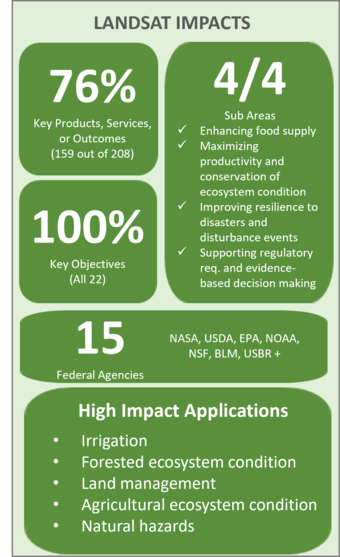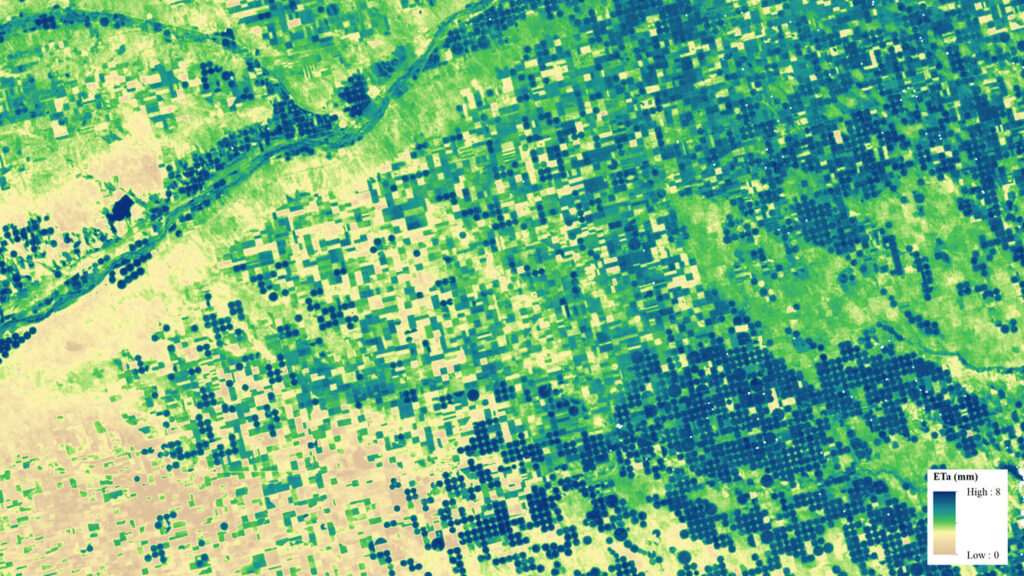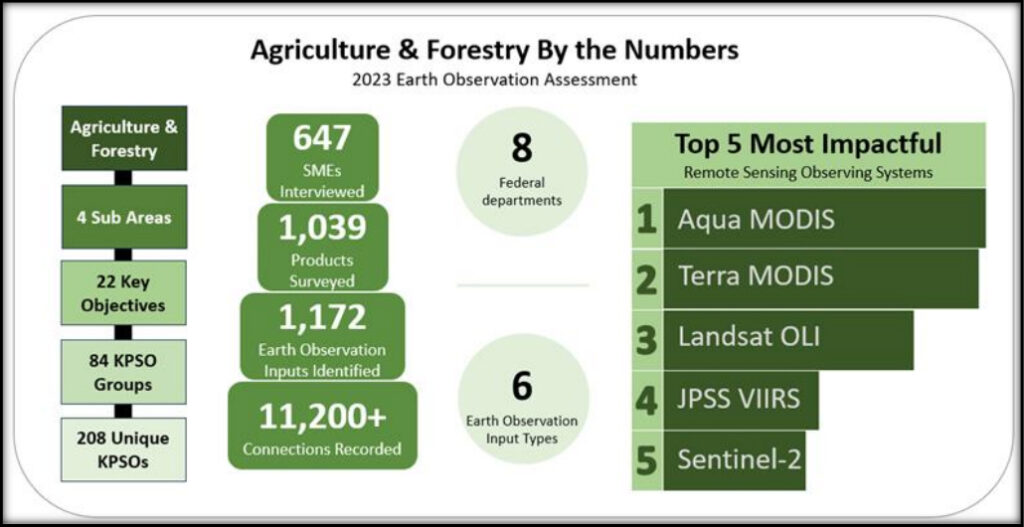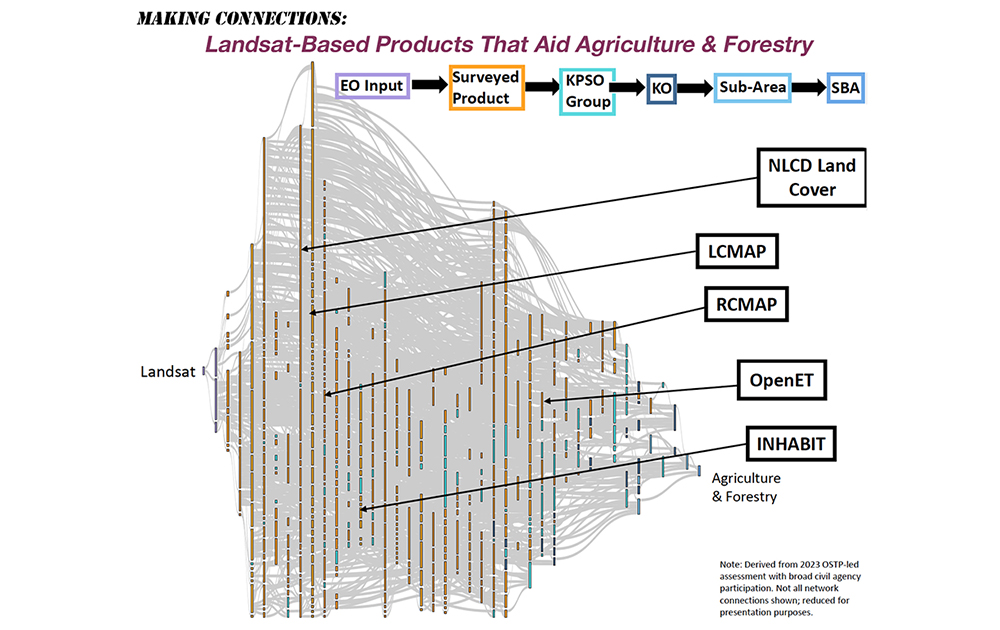Post by USGS Landsat Missions
The 2023 EOA report evaluates the benefits of 1,000 Earth observation data sources used by the federal government.
With its 50-plus years of monitoring and archiving land changes, the Landsat data ranks in the top 4 sources in the report for agriculture and forestry on a list that encompasses data from space sensors, airborne sources, field work and other reference data. The assessment looked at the value of Earth observation sources across these four main themes:
Enhancing the food supply
Maximizing productivity while ensuring conservation of ecosystems
Improving resilience after disasters or disturbances
Supporting regulatory requirements and evidence-based decision making
Landsat got top marks for aiding decision makers with objectives such as conservation of ecosystems, irrigation efficiency/monitoring, disaster management, land resource management and nutrient and water quality monitoring.

“The Landsat program represents a cornerstone of Earth observation science, providing a critical 50-plus year data record for understanding and managing our planet’s resources and anticipating future landscape change,” said Tim Newman, Program Coordinator for the USGS National Land Imaging (NLI) Program.
“The assessment identified Landsat as the third most impactful remote sensing observing system, behind the two MODIS instruments aboard the Aqua and Terra satellites, among over 1000 Earth observation data sources evaluated for their contributions to the agriculture and forestry sectors. This ranking highlights Landsat’s critical role in supporting key thematic areas, including enhancing food supply, improving resilience to disasters, and supporting evidence-based decision-making,” Newman said.
Many federal agencies like the USDA, EPA, NOAA, and NASA rely on Landsat data to meet the goals of their programs and the needs of society.
Newman continued to say the report validates the extension of the Landsat mission with the planned launch of Landsat Next, a trio of satellites with “superspectral” capabilities, in 2031.



Three Landsat sources were assessed: the Landsat 8/9 Operational Land Imager (OLI), the Landsat 8/9 Thermal Infrared Sensor (TIRS) and the Landsat archive, located at the U.S. Geological Survey Earth Resources Observation and Science (EROS) Center in Sioux Falls, South Dakota. Landsat OLI ranked 4th, Landsat TIRS ranked 9th and the Landsat archive ranked 14th on the list of Earth observation data sources.
Development of the EOA report was overseen by the U.S. Group on Earth Observations (USGEO), an interagency partnership coordinating Earth observation activities. The EOA has roots in the NASA Authorization Act of 2010 and the 2013 Strategy for civil Earth observations to assess and enhance the Nation’s Earth observation portfolio. More than 600 subject matter experts were consulted in developing information that was analyzed and presented in the report.
“[Landsat’s] continued representation and very high impact in the EOA underscore the importance of the program for land management, ecosystem conservation and disaster monitoring, to name a few,” Newman said.
The EOA reports have been posted to the USGEO website.
Read the post on the USGS Landsat website.






